Bride of Frankenstein (1935)
Directed by: James Whale
Written by: John L. Balderston, Mary Shelley, William Hurlbut
Starring: Boris Karloff, Colin Clive, Elsa Lanchester
On a stormy night, Percy Bysshe Shelley and Lord Byron praise Mary Shelley for her story Frankenstein. She says that she has more of the story to tell. We then Follow straight on from the previous film’s climax, the villagers cheering the apparent death of the Monster, though their joy is tempered by seeing Henry Frankenstein apparently dead. After they have left, Hans, father of the murdered girl in the first film, decides he needs proof of the Monster’s death and is killed by the Monster, who is still alive. Henry is nursed back to health by his fiancée Elizabeth but is then visited by a former mentor, the eccentric Dr. Pretorius. He himself has created life but only in miniature, and wants Henry to collaborate with him, but Henry refuses. Meanwhile the Monster is wandering around the countryside, terrifying all but only really wanting friendship……….
Horror fans are constantly in debate as to whether Frankenstein or Bride Of Frankenstein is the better movie. I personally have never been in doubt that Bride Of Frankenstein is the jewel in the crown of Universal’s horror cycle, and while there would be many enjoyable and often very good entries to come, they would never better it. It’s a work of stunning imagination, of unparalleled ingenuity, and of amazing audacity, which I cannot believe got past the censors in the form it did. It seems to be constantly straining against the confines of the traditional Gothic horror movie and lovingly mocks it in an even more elaborate way then director James Whale’s previous The Old Dark House, yet never forgets what it is. It’s also so incredibly entertaining, never for a moment forgetting to be fun. Many years ago I showed it to my half brother who was eight at the time and he was engrossed and loved it, a sure sign of this seventy-five year old film’s durability. Even if none of the films I have so far reviewed appeal to you because of their great age, I seriously recommend you check this particular one out. You will be surprised and maybe even amazed.
Right after the previews of Frankenstein, Universal considered a sequel, which is perhaps why the studio insisted James Whale shoot the coda where Henry Frankenstein is seen to survive. Whale was asked to make a follow-up and he refused, so Universal turned to Robert Florey, who had written the initial script for Frankenstein and almost directed it. His treatment, entitled The New Adventures Of Frankenstein – The Monster Lives, was rejected. After this, a total of eleven screenwriters worked on the project, with one idea involving the Monster taking over his creator’s work, and another not even having a Monster at all but Frankenstein building a death ray. Around mid-1933, The Return Of Frankenstein, starring Boris Karloff, was announced, possibly to feature most of the original cast, and possibly to star Bela Lugosi [who had turned down the role of the Monster in Frankenstein] as Frankenstein. Whale continued to be asked but said the supposedly ‘final’ script by Tom Reed “stinks to high heaven” and held Universal at bay by making The Old Dark House and The Invisable Man. Finally he was persuaded to return on the basis that he had total control [which he was given because studio head Carl Laemmle Jnr was on holiday] and a better script, which was then provided by John L.Balderston [who had co-scripted Dracula, Frankenstein and The Mummy], who was the one to think up the idea of Frankenstein making a female monster, and William Hurlbut. The title change to Bride Of Frankenstein was only confirmed once shooting started.
Of course Frankenstein creating a female creature came from the original novel, where the lonely Monster demands a mate and his creator obliges, only to destroy it before he brings it to life. Some have claimed that originally the Bride was going to either have the heart of Frankenstein’s fiancee Elizabeth or actually be Elizabeth brought back to life, but that has been discounted by other sources. Several other bits and pieces from the book made their way into the script, though Karloff disliked having the Monster speak. Colin Clive returned to play Frankenstein but a broken leg meant that he had to play most of his scenes sitting down. Brigitte Helm from Metropolis was considered for the Bride but in the end Elsa Lancaster was chosen, though during the opening credits the person playing the Bride was credited only as “?”, just like Karloff had been in Frankenstein. He, as in all the films made at the height of his career, was billed simply as “KARLOFF”. The film ran over time and over budget, then was subjected to both censorship problems and alterations by Laemmle, who found the film rather too strange for his liking. Fifteen minutes were removed. Amongst other things, the prologue was cut to the bone, the number of murders by the Monster was reduced from twenty one to ten, and a lengthy sequence in which a man murders his uncle and blames the Monster went. Some new footage was shot, notably the Monster terrorising some gypsies and, perhaps most importantly, Henry and Elizabeth escaping the final explosion. If you look closely, you can see them inside the castle just before it blows up. To be honest, the cuts rarely seem to harm the film, and it was another huge hit, though critical response was very mixed.
The opening involving Mary Shelley and her companions Lord Byron and Percy Bysshe Shelley perhaps seems a rather laborious way of getting into the story, and possibly had more substance before the cuts. After this, though, the film really is one great scene after another, setting out its mixture of horror, humour and pathos immediately with the sequence of the villagers watching the burning windmill. Una O’Connor returns from The Invisable Man to shriek and deliver choice lines such as “insides is always the first to go”, then Hans falls into the pit and is promptly throttled by the still-alive Monster, who then climbs out and is helped out by the wife thinking it’s her husband….who is then pulled into the pit. After spending a few minutes with Henry and Elizabeth, Henry goes with Dr. Pretorius to his castle to see his creations, which he says he has “grown”, though we are left none the wiser as to how he has created them and it’s all closer to magic than science. The scene of the six tiny people in jars [which if you look closely are actually seven but one, a baby, was mostly cut out], which boasts amazingly fine special effects by John P. Fulton, is mind bogglingly bizarre and very very funny, especially in the bit where the amorous King gets out of his jar to visit the Queen and is picked back up by tweezers and put back in his jar. Incidentally, this was removed by the censors in Japan, because it constituted “making a fool out of a king”.
Even more than Frankenstein, the Monster is a corrupted innocent who just can’t get along with people and is constantly rejected by them, though I wander if the original cut showed him in a much more unsympathetic light, considering he killed a lot more people in it. Mostly he kills by mistake, though there is the opening couple and one bit where it seems like he has murdered a young girl. Whale was openly homosexual in a way that was rare in Hollywood at the time [well, it’s still fairly rare today] and so his feelings of being in some way an ‘outcast’ make themselves felt in the film. Much has been written about the strong gay elements in the picture, and Dr. Pretorius comes across as being gay in his scenes, but I think a bit too much has been made of this by some; most of the time you wouldn’t think about supposed homosexual aspects unless you knew the picture was supposed to contain them, whereupon you would then look for them in every scene! The film is certainly very campy, and I can see why some prefer the more primal, stark horror of Frankenstein. In that film, the Monster was often sympathetic but was still rather scary. Bride Of Frankenstein spends so much time with the Monster that he ceases to be frightening, especially when he does things like smoke a cigar!
Despite the gently mocking tone, Bride Of Frankenstein is at times deeply moving, especially during a sequence where the Monster becomes the uninvited guest of a blind hermit, and for a brief period, finds a friend. The choice of Schubert’s extremely poignant piece ‘Ave Maria’ as the piece that the hermit plays on his violin, helps the scene climax in a moment of almost unbearable pathos. The two lonely people become close and the tune is played on the soundtrack with an organ, making the scene resemble a kind of religious epiphany, and a close-up of the Monster’ s face shows a single tear running down it. his bit just brings me to tears every time I watch the film, and I almost scream when some hunters turn up and it all goes wrong. It’s the climax, of course, where the film goes past mere genius and becomes something truly sublime, something almost indescribable in its effect, in the way only a few films can do. With Kenneth Strickfaden’s machinery even more elaborate and detailed, the creation sequence of Frankenstein is well and truly outdone as the Bride is created in an exhilarating montage incorporating lots of strange angles which become almost dizzying. Then the Bride, who can barely stand up, starts to be unwrapped, and as we hear wedding bells on the soundtrack, we cut to the iconic Elsa Lancaster in her white shroud or wedding dress with the white lightning streaks in her black hair, which sticks back as if she has been electrocuted.She truly is an incredible creation; uncanny, unnatural, but somehow believable in the context of the film. The Monster appears, but the Bride hisses at him in a hideous swan-like way and seems to be more interested in her creator. The Monster slowly moves towards her with outstretched hands, but again receives that horrid hiss. Full of anger, the Monster blows up the laboratory, and we’re so stunned by what we’ve been watching that one can forgive the stupidity of the castle containing a lever that can blow it up!
Whale truly lets himself go with this film, conjuring up, with the help of cinematographer John J. Mescall’s stunning cinematography [supposedly he was drunk throughout production, and it really seems to have been a good thing!], a plethora of wonderful and often audacious images, with some particular imagery that I’m surprised the censors passed in 1935. At one point the Monster is tied to a wooden beam and hoisted up like Jesus, but if you look closely the whole film is filled with Christian imagery which, when combined with the Gothic element, makes the whole experience intoxicating and oddly not jarring. Said Gothic element is pushed to virtually expressionistic extremes in some of the design in this entirely studio bound film: check out the stark nightmare forest which seems to consist of just tree trunks, or the interior of Frankenstein’s castle, filled with arches and nooks and crannies, an abode out of a dream rather than any kind of reality. Then there’s Franz Waxman’s incredible score, a wonderful piece of work in its own right, going through a variety of emotions and giving us a seemingly endless number of themes and mofits for various characters and types of scene, from the mysterious beauty of the Bride’s theme to the deliberately corny motif for Dr Pretorius to the muscular five note motif for the Monster, indicating his strength and danger. By today’s standards, you could say there is too much music and some of it is overly melodramatic, but look at, for instance, John Williams’ scoring in the Star Wars movies; it follows the same principle. Much of it would be reused in serials such as Flash Gordon.
Karloff, wearing slightly different make-up than before to show the after effects of the fire he survived, may not have liked everything he had to do but doesn’t show it from his performance, which is incredibly evocative and moving. Lancaster, who wore stilts as the Bride, is unforgettable in her five minute appearance [though of course she did play Mary Shelley as well in the prologue], and Colin Clive convincingly harassed as Henry Frankenstein, but for me the standout performance after Karloff is by Ernest Thesiger as Pretorius. He’s both very creepy and extremely funny, his best scene for me being when he dines alone in a crypt over a coffin, then casually reacts to the Monster’s appearance by offering him a cigar. Mescall’s camera seems to make the most of his gaunt but fascinating face, while the actor seems to deliver every single word with lip-smacking relish. I wish that they’d made a whole film about this character. The entire cast is populated by interesting faces and voices, and only Valerie Hobson lets the side down as Elizabeth. It’s possible that Whale encouraged her hammy but unconvincing performance, and it is amusing, but I don’t think it really works when she’s supposed to be playing probably the only normal person in the picture.
To be honest though, digging around trying to find flaws in Bride Of Frankenstein is a pretty pointless exercise. This is a wonderful, wonderful film that hasn’t lost any of its effect and it’s entertainment value today. Every scene has something wondrous, something strange, something funny, just something, that contributes to a whole that is just an astounding achievement and one of the best movies ever made – of any genre.
Rating: 










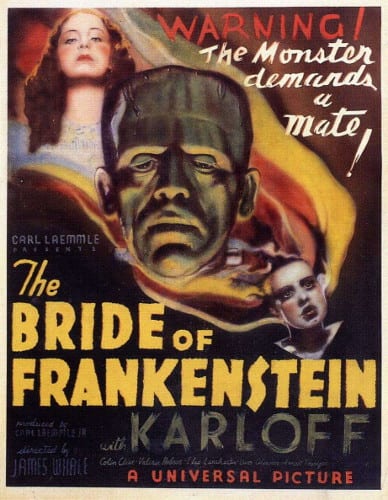

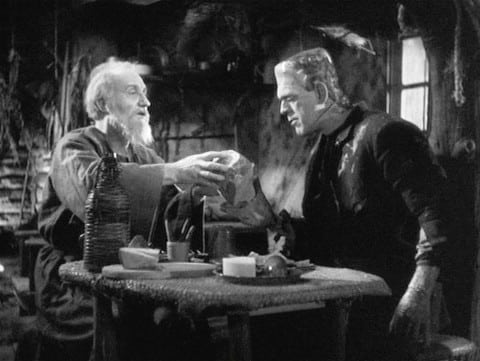
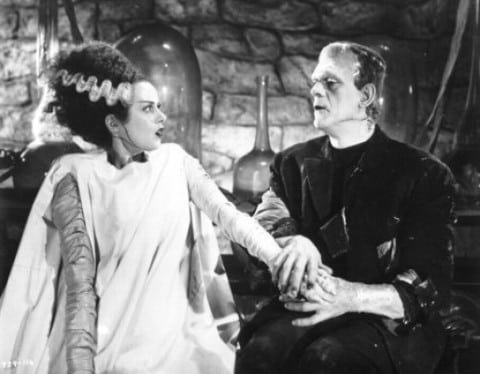

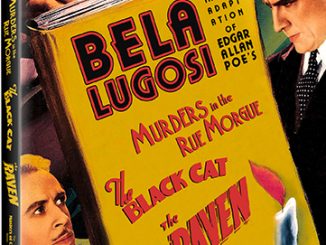

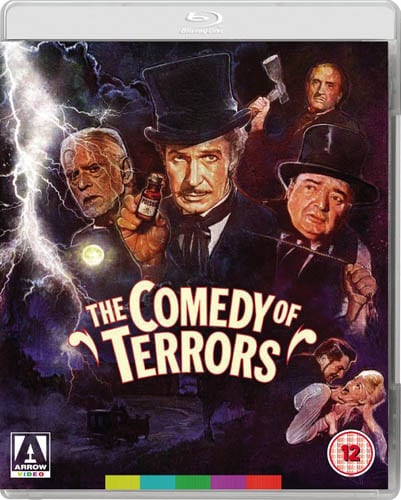
Cool, glad to come across another fan of the old Universal horror movies! And good blog by the way from what I can see, will read some of the articles when I get the time!